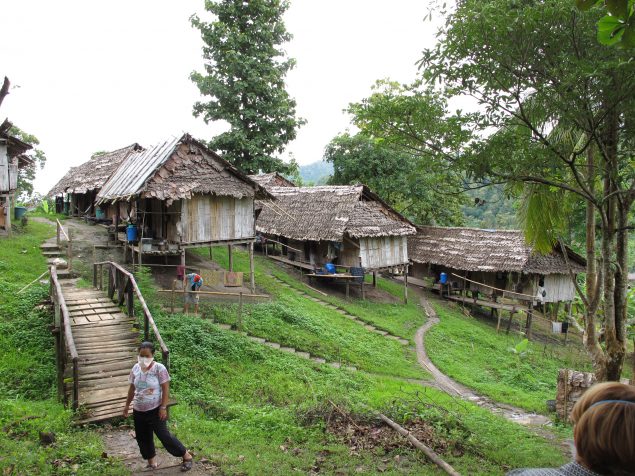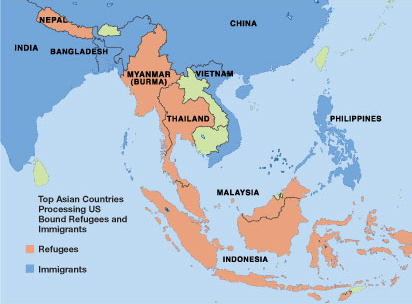Asia Field Program

Who We Are
Based at the US CDC-Thailand office in Bangkok, the Asia Field Program in the Division of Global Migration and Quarantine (DGMQ) includes public health experts who oversee medical screening of US-bound immigrants and refugees in Asia.
What We Do
The DGMQ team works with government and nongovernment partners to improve the health of refugees and immigrants and prevent the importation of infectious diseases by:
- Developing technical instructions and providing enhanced training to physicians who are responsible for performing medical examinations of US-bound refugees and immigrants
- Promoting preventive treatments for refugees with special emphasis on parasitic diseases, anemia, and chronic hepatitis B; and promoting vaccination of refugees and immigrants before departure for several diseases such as measles and diphtheria
- Providing technical assistance and training to regional medical and public health officials that allows them to better pinpoint, treat, and track diseases that threaten the health of refugees, immigrants, and US residents
With the aim of preventing the spread of infectious diseases among international travelers, immigrants, refugees, and other mobile populations, DGMQ is at the forefront of addressing public health threats before they cross international borders. Since 2004, more than 100,000 refugees from Thailand, 96,000 from Nepal, and 75,000 from Malaysia have resettled to the United States. More than 50,000 immigrants from these countries also moved to the United States in the same period.
Where We Work
Asia is a region with a high burden of deadly infectious diseases, including tuberculosis and avian influenza. Emerging diseases such as Nipah virus infection and SARS have also come from the region. Because many refugees legally admitted into the United States arrive from Asia, the Asia Field Program supports disease surveillance among US-bound populations and helps prevent the introduction of diseases into the United States.

Refugees: Indonesia, Malaysia, Myanmar (Burma), Nepal, Thailand
Immigrants: Bangladesh, China, India, Philippines, Vietnam
Program in Action
Vaccination Against Cholera in Refugee Camps, and Its Effect on Disease Prevention
Following four cholera outbreaks in a refugee camp on the Thailand-Burma border, a campaign was launched to deliver oral cholera vaccine (OCV) and provide educational messaging about cholera prevention. At the same time, we measured the refugees’ knowledge about OCV, cholera transmission and prevention, and sanitation practices. More than 35,000 refugees (81% of the camp population) had received at least one dose of OCV, and improvements were noted in awareness of cholera prevention methods and the number of households who reported boiling or treating drinking water and washing hands with soap.
Measuring the Impacts of Enhanced Health Interventions for Refugees
Preventive measures provided to more than 2,000 Burma refugees resettling to the United States from Thailand made important gains. Presumptive treatment for parasitic infections before departure reduced the prevalence of intestinal helminth infections fivefold. After screening and treatment for anemia, the prevalence of moderate to severe anemia was reduced by half by the time of departure. One in 10 refugees had hepatitis B infection, and early detection meant faster evaluation for liver disease and counseling to reduce transmission to others. Because of this pilot project’s success, pre-vaccination hepatitis B testing and counseling are now routinely offered to US-bound refugees worldwide.
How We Work Together
The DGMQ Asia Field Program collaborates with other CDC programs, as well as with the US Department of State, the International Organization for Migration, the United Nations Refugee Agency, and nongovernmental organizations. CDC has a long history in Thailand and an especially close and productive relationship with Thailand’s Ministry of Public Health.
Our collaborative efforts include:
- Supporting the tracking and reporting of disease in Thai refugee camps
- Providing technical assistance to international and nongovernmental organizations that work with refugees in Thailand, Malaysia, and Nepal
- Funding Thailand Ministry of Public Health projects related to migrants
- Providing technical and science-based support for developing new tools and practices to better monitor health conditions at airports and land border crossings
- Providing technical assistance for developing and mentoring opportunities that enhance the travel medicine residency program in Thailand